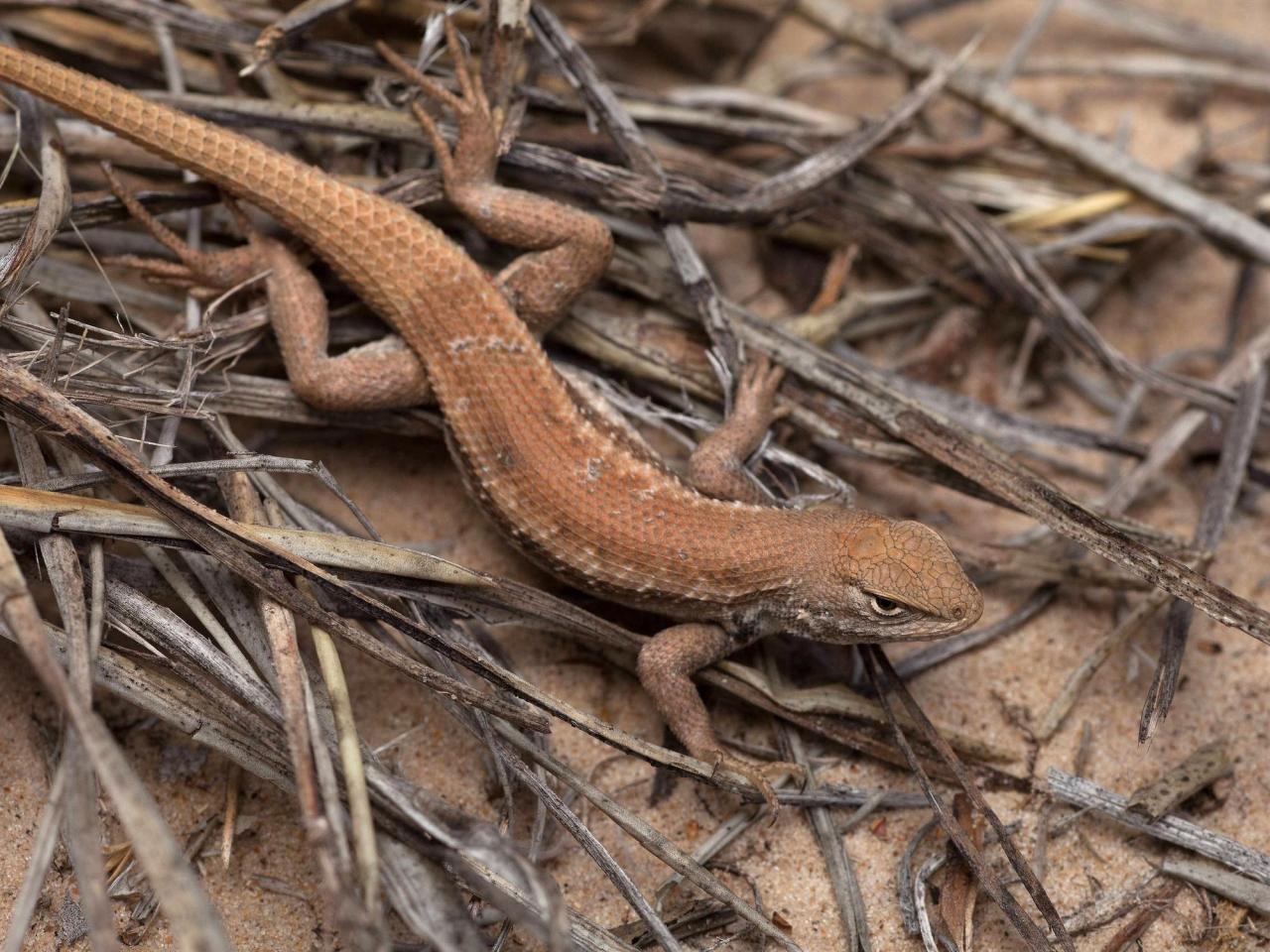New endangered listing for rare lizard could slow oil and gas drilling in New Mexico and West Texas
Federal wildlife officials declared a rare lizard in southeastern New Mexico and West Texas an endangered species Friday, citing future energy development, sand mining and climate change as the biggest threats to its survival in one of the world’s most lucrative oil and natural gas basins.
“We have determined that the dunes sagebrush lizard is in danger of extinction throughout all of its range,” the U.S. Fish and Wildlife Service said. It concluded that the lizard already is “functionally extinct” across 47% of its range.
Much of the the 2.5-inch-long (6.5-centimeter), spiny, light brown lizard’s remaining habitat has been fragmented, preventing the species from finding mates beyond those already living close by, according to biologists.
“Even if there were no further expansion of the oil and gas or sand mining industry, the existing footprint of these operations will continue to negatively affect the dunes sagebrush lizard into the future,” the service said in its final determination, published in the Federal Register.
The decision caps two decades of legal and regulatory skirmishes between the U.S. government, conservationists and the oil and gas industry. Environmentalists cheered the move, while industry leaders condemned it as a threat to future production of the fossil fuels.
The decision provides a “lifeline for survival” for a unique species whose “only fault has been occupying a habitat that the fossil fuel industry has been wanting to claw away from it,” said Bryan Bird, the Southwest director for Defenders of Wildlife.
“The dunes sagebrush lizard spent far too long languishing in a Pandora’s box of political and administrative back and forth even as its population was in free-fall towards extinction,” Bird said in a statement.
The Permian Basin Petroleum Association and the New Mexico Oil & Gas Association expressed disappointment, saying the determination flies in the face of available science and ignores longstanding state-sponsored conservation efforts across hundreds of thousands of acres and commitment of millions of dollars in both states.
“This listing will bring no additional benefit for the species and its habitat, yet could be detrimental to those living and working in the region,” PBPA President Ben Shepperd and NMOGA President and CEO Missi Currier said in a joint statement, adding that they view it as a federal overreach that can harm communities.
Scientists say the lizards are found only in the Permian Basin, the second-smallest range of any North American lizard. The reptiles live in sand dunes and among shinnery oak, where they feed on insects and spiders and burrow into the sand for protection from extreme temperatures.
Environmentalists first petitioned for the species’ protection in 2002, and in 2010 federal officials found that it was warranted. That prompted an outcry from some members of Congress and communities that rely on oil and gas development for jobs and tax revenue.
Several Republican lawmakers sent a letter to officials in the Obama administration asking to delay a final decision, and in 2012, federal officials decided against listing the dunes sagebrush lizard.
Then-U.S. Interior Secretary Ken Salazar said at the time that the decision was based on the “best available science” and because of voluntary conservation agreements in place in New Mexico and Texas.
The Fish and Wildlife Service said in Friday’s decision that such agreements “have provided, and continue to provide, many conservation benefits” for the lizard, but “based on the information we reviewed in our assessment, we conclude that the risk of extinction for the dunes sagebrush lizard is high despite these efforts.”
Among other things, the network of roads will continue to restrict movement and facilitate direct mortality of dunes sagebrush lizards from traffic, it added, while industrial development “will continue to have edge effects on surrounding habitat and weaken the structure of the sand dune formations.”
Source: wral.com
